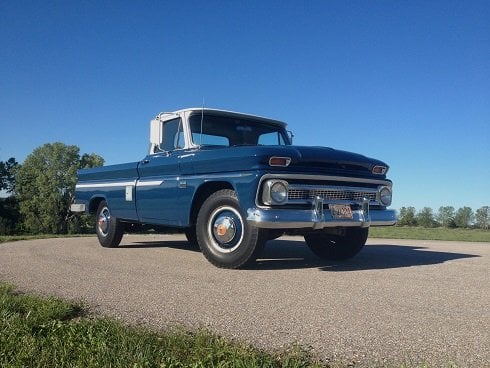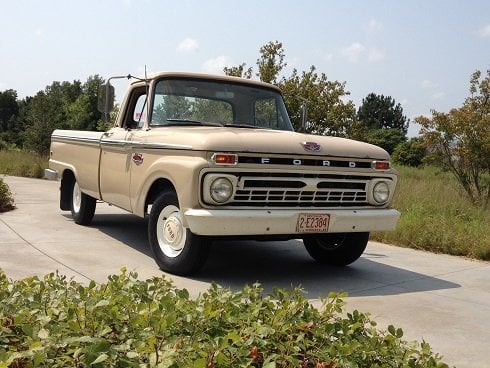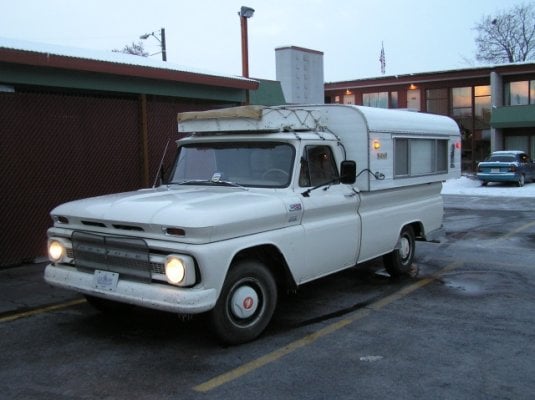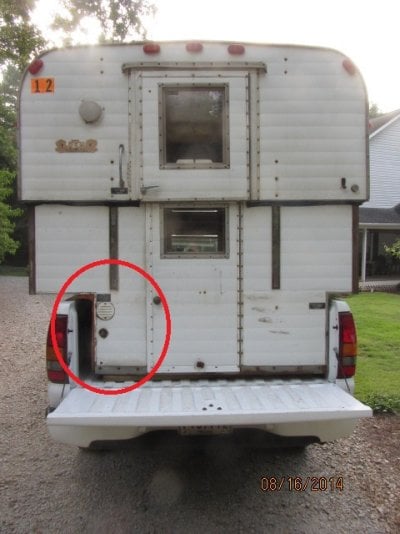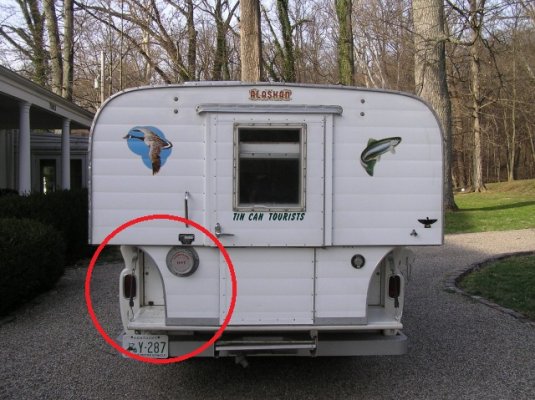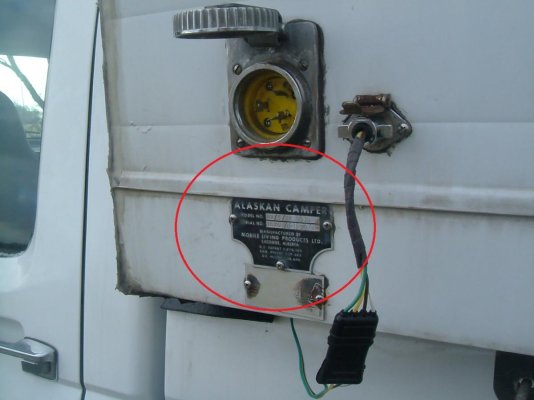Hello, all. I've been infatuated with vintage Alaskan NCO campers for some time now. But I've never seen one in person. Happily, I found your forum and have been gradually going through all the posts trying to answer some of my basic questions. I've never owned a truck camper before (or any camper for that matter) but I collect all-original 60s camper pickup trucks. I have a 1966 Chevy C20 Custom Camper and a 1966 Ford F100 Camper Special. Both are low-mile original trucks. I'd like to investigate the possibility of putting an 8' Alaskan from the 60s on my 3/4 ton Chevy. Obviously, wouldn't be doing any hardcore camping with such a vintage rig but I think it would just look so perfect on it. Here are some of my questions. Sorry if these have been answered before.
1.) Width. It seems like in photos I've seen (both period photos and contemporary photos) the width of the 8' NCOs seems to vary. On some trucks they hang way over the bedside whereas on others there's not nearly as noticeable an over-hang. Did the widths vary over the years?
2.) Visual age ID. What are the tricks for telling Alaskan age range just by looks? Things like triangle marker lights or crank awning windows might be clues, I suspect. Obviously, I'm interested in something period-correct for the 60s. Just need to know for sure what visual cues to look for.
3.) When were the CO Alaskans introduced? My guess is the 70s.
4.) What years had the classic "curvy" rear silhouette? The ones with the radius profiles between the fat part and the skinny part, if that makes sense. You know, the shape of the Alaskan serial number tag (I think).
5.) What kind of power does an 60s Alaskan require? Is it a 4 hole plug? My truck has a 6 pole outlet on the rear bumper. Would that be adequate to plug into?
6.) Is there any way to anchor an Alsakan down without drilling into the truck bed and/or frame? I like the look of the old stake pocket anchors. Will these work? The camper should fit inside the bed with the tailgate up for travel, right? Seems like that alone would go a long ways toward keeping the Alaskan put in the bed. As I mentioned, I would never be going off-road or at interstate speeds (like that's even possible, lol).
Sorry for all the questions. But this seems like the place to find answers. Thanks for the help!
1.) Width. It seems like in photos I've seen (both period photos and contemporary photos) the width of the 8' NCOs seems to vary. On some trucks they hang way over the bedside whereas on others there's not nearly as noticeable an over-hang. Did the widths vary over the years?
2.) Visual age ID. What are the tricks for telling Alaskan age range just by looks? Things like triangle marker lights or crank awning windows might be clues, I suspect. Obviously, I'm interested in something period-correct for the 60s. Just need to know for sure what visual cues to look for.
3.) When were the CO Alaskans introduced? My guess is the 70s.
4.) What years had the classic "curvy" rear silhouette? The ones with the radius profiles between the fat part and the skinny part, if that makes sense. You know, the shape of the Alaskan serial number tag (I think).
5.) What kind of power does an 60s Alaskan require? Is it a 4 hole plug? My truck has a 6 pole outlet on the rear bumper. Would that be adequate to plug into?
6.) Is there any way to anchor an Alsakan down without drilling into the truck bed and/or frame? I like the look of the old stake pocket anchors. Will these work? The camper should fit inside the bed with the tailgate up for travel, right? Seems like that alone would go a long ways toward keeping the Alaskan put in the bed. As I mentioned, I would never be going off-road or at interstate speeds (like that's even possible, lol).
Sorry for all the questions. But this seems like the place to find answers. Thanks for the help!

